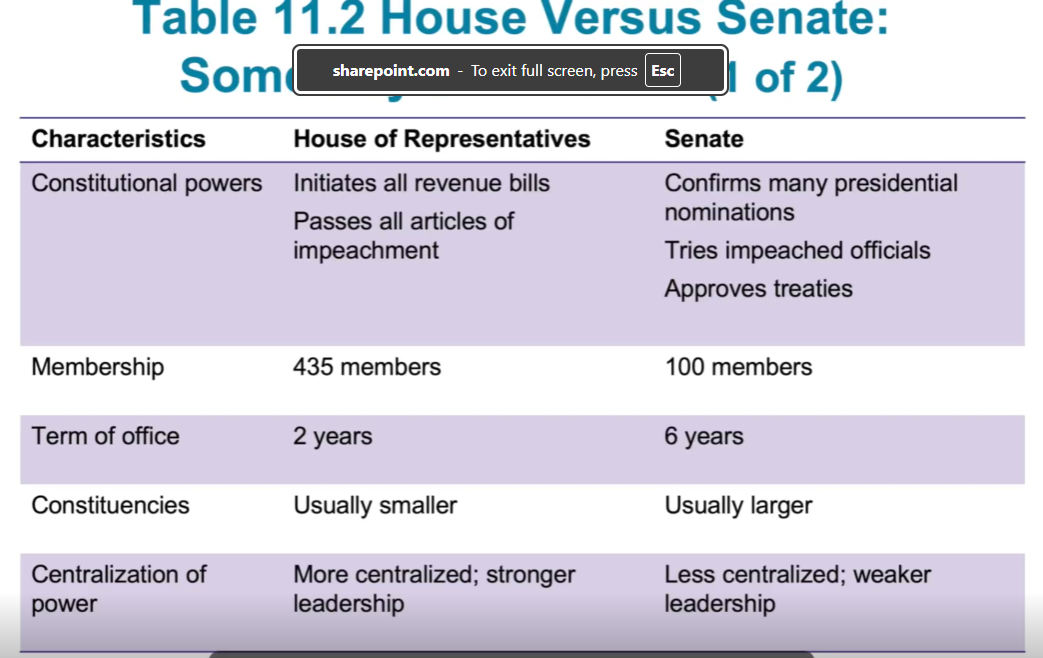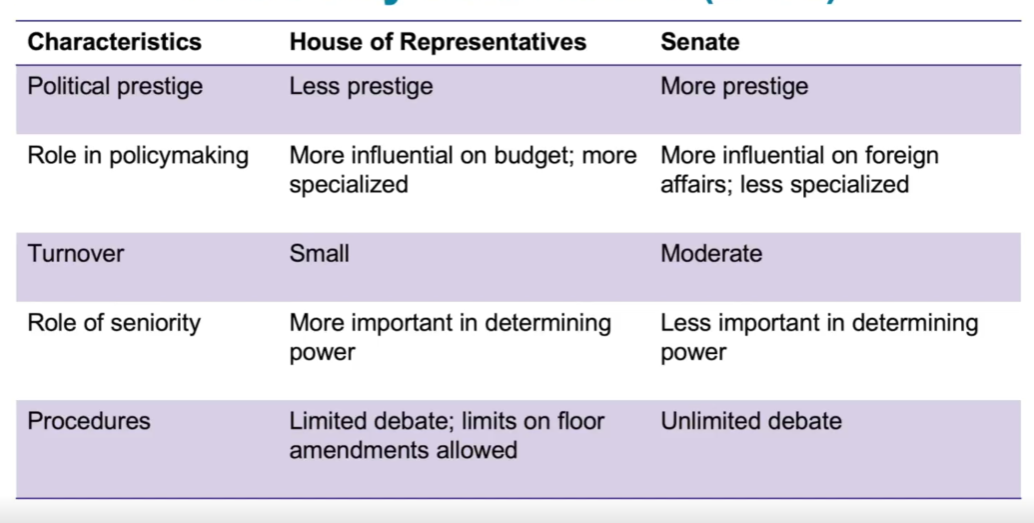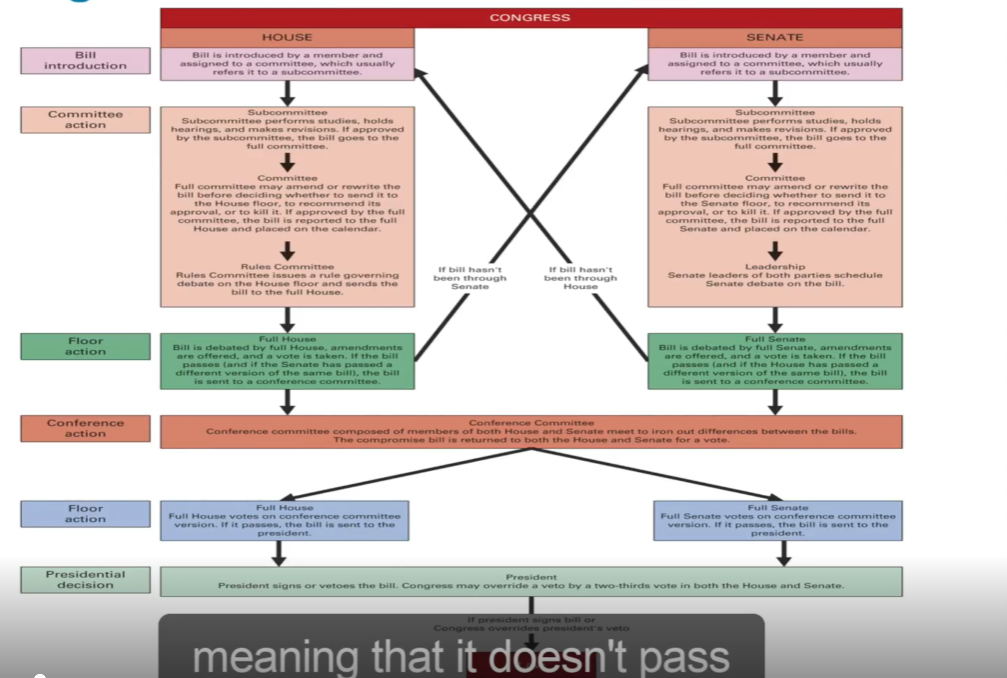Chapter 11 Congress
1/18
There's no tags or description
Looks like no tags are added yet.
Name | Mastery | Learn | Test | Matching | Spaced |
|---|
No study sessions yet.
19 Terms
Constitution
Legislative= Congress; HOR and Senate
Executive= White house
Judicial= Supreme Court
The members
not glamorous job, but perks:
power to make key policy decisions
$174000 annual salary, retirement and health benefits
Constitutional Requirements
house: age 25, citizens for seven years
Senate; 30, citizen for nine years
reside in state
435 representatives; 100 senators
representation
descriptive; mirrors personal characteristics
substantive: same beliefs
women underrepresented group in government
Why not alot of women in congress
fewer women run
childcare responsibilities
risk aversion
bias
must be more qualified than men to get equal consideration from voters
Who wins elections
incumbents
already in
house
more than 90%-win reelection
most with more than 60% of the vote
senate
still likely to win but with narrower margins
larger, more diverse constituencies
more media coverage, accountability
challengers with name recognition and backing
The advantages of Incumbency
advertising and Constituent Contact
Credit Claiming
casework
pork barrel projects: member of congress bring jobs wants to boost economy
weak opponents
campaign spending
party identification
Defeating Incumbents
why challenge
challengers can be naive
Unexpected help for challengers
scandal
redistricting
wave elections
Open seats
vacant seat, no incumbent running
how most turnover occurs
Stability and Change
stability from incumbency
development of expertise
harder for voters to affect elections
term limits?
American Bicameralism
bicameral legislature
bills must pass both houses
checks and balances
result of Connecticut compromise
the house
more institutionalized
The senate
less centralized and less disciplined


Congressional Leadership
Chosen by Party
The House
speaker of the house
majority and minority leaders
whips
The senate
vice president
majority leader
Congressional Leadership in Perspective
The Committees and Subcommittees
Four types
standing committees
joint
conference
select
Getting on a Committee
constituent needs
appealing to leadership
Committee Chairs and the Seniority System
Congressional Staff
Personal staff
casework
legislative functions
Committee staff
legislative oversight
Staff agencies
congressional research service (CRS)
Government accountability office
congressional Budget office

Lawmaking process
agenda setting
Committees at work: legislation
Committees at work: oversight
Floor debate and the Filibuster
Unorthodox Lawmaking
Agenda Setting
agenda setting
house and senate set own agendas
house rules committee
House republicans informal rule
when they are in the majority
wont vote on a bill without the support of majority of their caucus
The Committees at work: legislation
Process
bills go first to standing committee
bills referred to subcommittee
full consideration
only bills with favorable reports
floor managers
committees at work: oversight
legislative oversight
hearings
grown in size and complexity
keeping tabs on the exec
tracking implementation of public policy
little incentive for members of congress
majority party
determines oversight agenda
Floor Debate and the Filibuster
Filibuster
unlimited debate
talking a bill to death
Cloture
takes 60 votes to end debate
Questions about Democracy
tool of the minority
recent rule changes
Unorthodox Lawmaking
Legislating becomes more difficult
Methods of coping
party leader involvement earlier and deeper
multiple legislative referrals
special rules from the House Rules Committee
Omnibus legislation
House Party Leaders, More Leverage
Party, Ideology, and Constituency
party influence
economic and social welfare policies
Ideology and polarized politics
parties more internally homogeneous
less compromise
Constituency opinion vs. member ideology
trustees vs instructed delegates
politicos
Congress and Democracy
depends on successful representation
congress unrepresentative
elites, chosen, based on states
Obstacles to good representation
constituent service, reelection campaigns
Representativeness vs. effectiveness